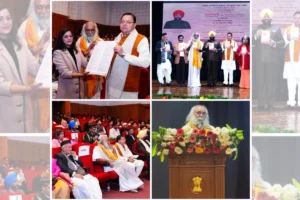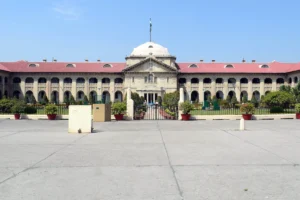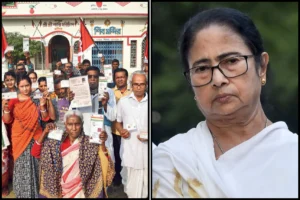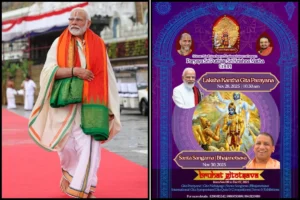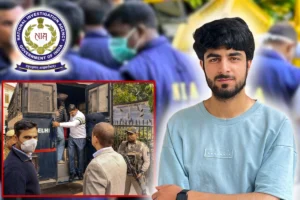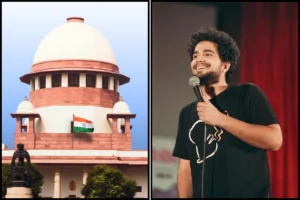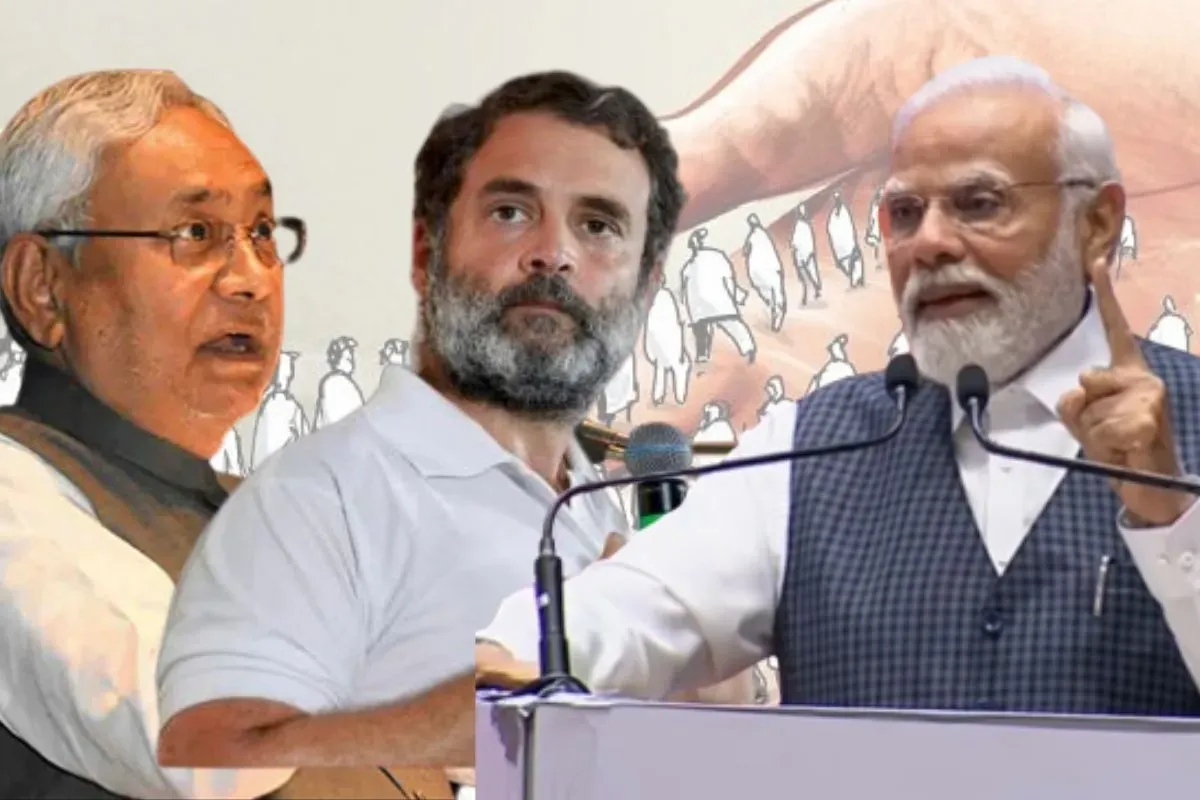
Nitish Kumar, Rahul Gandhi and Prime Minister Modi
Do the results of Bihar government’s caste census have any connection with the new political alliance formed by Nitish Kumar last year? People who are well acquainted with Nitish’s ‘far-sighted’ politics will definitely answer this in yes and will also argue that in August 2022, he will leave BJP and form a coalition government with Lalu Prasad Yadav’s Rashtriya Janata Dal (RJD). The same strategic maneuver that Nitish had indicated about the changed political stance is in front of us today in the form of caste calculation. I.N.D.I.A Alliance is now demanding such a census in the entire country and the big question is whether the caste count figures that have come out can prove to be a lifeline for electoral politics, especially for the opposition in 2024?
This caste count needs to be put in proper perspective before any response can be made. This is indeed a historic event as it is the first such exercise on such a large scale in independent India where the results have been made public. Apart from Tamil Nadu and Karnataka, the then central government had collected comprehensive caste data through socio-economic and caste census in 2011 but never disclosed it for unclear reasons. On the other hand, the Bihar government has also not yet released important data related to the socio-economic status of castes. Making it public will definitely help in creating a better social understanding regarding the caste census, otherwise the real purpose of the caste census will not be to free it from the allegation of counting the castes and not the population.
According to the report prepared on the basis of caste census, the largest caste group in Bihar in terms of numbers is extremely backward class, whose number is 36.01 percent. After this there is the backward class whose number is 27.12 percent of the total population. The number of Scheduled Castes i.e. SC category is 19.65 percent, the number of Scheduled Tribes i.e. ST is 1.68 percent and the share of general category is 15.52 percent. On the basis of 1931 census, the number of OBCs in Bihar has been considered to be 52 percent for the last nine decades. But with the increase in population the entire mathematics of OBC castes has changed. According to the caste census report, if extremely backward class and backward class are added, then the number of OBC castes in Bihar increases to 63 percent, which is 11 percent more than the estimated figure till now. In a country where there is a history of the central government falling with just one vote, such a huge difference has the potential to change the entire political game. That is why it is being claimed that the wishes of parties like RJD and JDU, which do OBC politics, will blossom and the difficulties for BJP, which is relatively more dependent on the upper castes, will increase after this report comes out.
India Alliance’s immediate understanding of the caste census data is that it will change three things in its favor in the coming days. Of course, after 2014, BJP may have tried to portray itself as the representative party of an inclusive society by raising the slogan of Sabka Saath, Sabka Vikas, Sabka Vishwas and has succeeded to a great extent in this, despite this, the political identity of the majority of Hindus remains with it. It is still stuck firmly together. The India Alliance feels that the caste census has given a solid agenda based on castes against this politics of religion which resonates with the larger population like the majority Hindus. Secondly, it also shows the power to challenge the image of Prime Minister Modi, who was created in the past as the protector of OBCs, and thirdly, the results of the caste census can strengthen the Mandal parties again. The opposition feels that if these three things are combined then the possibility of change of power next year will also come true. In the caste census of Bihar, OBC, Scheduled Caste and Scheduled Tribe together constitute 84 percent. Taking this number as the basis, the Indian alliance is demanding caste census in the entire country and is trying to create a political narrative which can decide the outcome of the election battle of 2024. He feels that by doing this 84 percent of the country’s population will come behind him.
But the fun of Indian electoral politics lies in the fact that here two and two do not equal four. The chemistry of emotions outweighs mathematical calculations. Sensing this, Congress MP Rahul Gandhi is repeatedly talking about ‘the more the population, the more the rights’ so that the large population of the country can be mobilized by making them realize the benefits available on the basis of numbers. In a way, this can also be called a U-turn of Congress regarding the politics of numbers because during the tenure of UPA, former Prime Minister Manmohan Singh was seen and heard advocating the first right of minorities on the country’s resources, just the opposite. Prime Minister Modi has also targeted Congress regarding this in an election rally in Jagdalpur, Chhattisgarh. In this rally, the Prime Minister has also given a new turn to electoral politics by defining the poor of the country as a new caste. This new ‘caste’ includes those 80 crore people who have been getting the facility of free ration since the difficult times of Corona. Apart from this, since the rise of Prime Minister Modi in national politics, BJP has also made inroads among OBCs and Scheduled Castes. In 2019, BJP got 10 percent more votes from OBC community as compared to 2014. The same pattern was seen among the voters of Scheduled Castes where there was a jump of ten percent. Women’s reservation can further strengthen this progress. Therefore, it may be too early to say that the caste census data can prove to be a lifeline for the opposition in the 2024 elections. Then there are more than 100 castes among the extremely backward. There is no universally accepted leader of this class. In such a situation, there is a question mark on whether any one party will be able to get the outright support of these castes.
The biggest thing is that caste census at the national level can be transformative on a large scale for both our social fabric and the reservation system. The maximum limit of reservation has been fixed at 50 percent by the Supreme Court. However, states like Tamil Nadu, Haryana and Chhattisgarh have passed laws to surpass this figure. India’s existing caste census data is from 1951 to 2011, documenting only Scheduled Castes and Scheduled Tribes. According to the central quota system, 27 percent seats have been kept aside for OBCs. However, the caste census is a clear indication that the actual OBC numbers are much lower in proportion to the other beneficiary sections of reservation. If the statutory limit of reservation is not increased then its rationalization can promote discrimination in the society because after all one class can be benefited only by giving the share of another class. BJP is arguing that caste census at the national level will rekindle the feelings of division. In all his recent election rallies, Prime Minister Narendra Modi has been prominently raising the issue that the India Alliance wants to divide the society on the basis of caste.
The last time Lalu Prasad Yadav was the Chief Minister of Bihar, a wave of caste politics had successfully challenged the Hindu polarization of the BJP brand. While promoting himself as an OBC leader, Lalu Prasad Yadav had also stopped the chariot of Lal Krishna Advani going to Ayodhya. It was also believed that behind this step, along with the caste card, there was also a feeling of giving assurance to the Muslim population of the state. If we look at the political scenario of the 1990s, there is every possibility of similar situations being created in the year 2023. During that period, the political fight in North India was confined between Mandal and Kamandal. On one hand there were people who supported reservation as a result of the Mandal Commission report and on the other hand there were supporters of Hindutva politics.
However, on the other hand, economic inequality can be analyzed better with the help of caste census. There is no documented data on OBC population in India. It is impossible to create policies for specific affirmative action without reliable data. This problem can be made easier by caste counting. Broadly speaking, caste census is a social need that goes far beyond electoral politics and there is a need to keep it beyond that. But the bitter reality is that doing this is more challenging than conducting caste census across the country.








